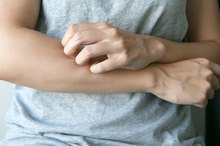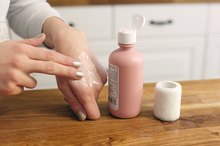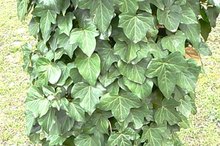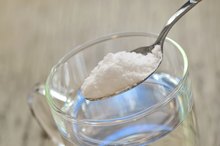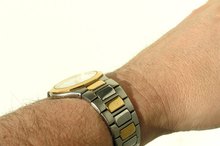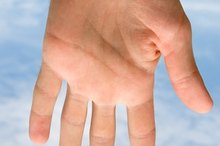How to Avoid Scarring With Poison Oak
Poison oak, along with poison ivy and poison sumac, is a plant whose leaves and sap contain a chemical that causes a strong immune system response by the human body. This is what causes the rash most people experience, and it does not end until the contaminated cells are shed, which takes from two to three weeks. The only way to prevent contamination is to not touch poison oak. Luckily, there are many treatments that will help make the rash bearable and prevent scarring.
Stop the Itch
Don’t scratch, as scratching damages the tender skin around and under the rash, which can lead to scarring. Dirt under fingernails or on the hands can also cause an infection, which will increase the chance of scarring.
How to Make Tick Bites Stop Itching
Learn More
Minimize the time it takes to heal and your exposure to potential scratching by going to see your doctor. She can give you a prescription for a steroid, which will reduce the inflammation and calm your rash in as little as 24 hours. Be aware that steroids can cause some behavior changes while you are taking them.
Take an over-the-counter antihistamine, which will help reduce the immune response, as well as inflammation. It will not work as well as steroids, but it also does not cause the side effects that steroids do and does not require a doctor’s visit.
Stages of Poison Ivy Rash
Learn More
Reduce the itch with applications of hydrocortisone cream. Apply it liberally to the affected area several times a day. Others swear by the old standby, calamine lotion, which helps dry the rash.
Go for a swim in a cool, chlorinated pool. The chlorine acts like a disinfectant and helps dry up blisters.
There are a number of all-natural folk remedies commonly used, including: rubbing the inside of a banana peel on the affected area two to three times a day; and using a paste of salt mixed with just enough water to moisten it and make it pasty, then spreading it over the rash two to three times a day, brushing it away after it dries.
Tips
Most remedies focus on reducing the itch, which will minimize your desire to scratch and, hence, prevent scarring. You may want to cover the rash at night or wear gloves so you cannot scratch the area while you are asleep.
- Don’t scratch, as scratching damages the tender skin around and under the rash, which can lead to scarring.
- Dirt under fingernails or on the hands can also cause an infection, which will increase the chance of scarring.
Related Articles
References
- Boston Children's Hospital. Poison Ivy, Poison Oak and Poison Sumac.
- American Academy of Dermatology. Poison Ivy, Oak, and Sumac: Who gets a rash and is it contagious?
- Prok L, McGovern T. Patient education: Poison ivy (Beyond the Basics). UpToDate. Updated March 25, 2019.
- U.S. Food and Drug Administration. Outsmarting Poison Ivy and Other Poisonous Plants. Updated August 6, 2016.
- Porter R. Poison Ivy, Poison Oak and Poison Sumac. National Capital Poison Center.
- Usatine RP, Riojas M. Diagnosis and management of contact dermatitis. Am Fam Physician. 2010;82(3):249-55.
- MedlinePlus. Bentoquatam Topical. Updated February 15, 2018.
- American Academy of Dermatology. (2018). Poison ivy, oak, and sumac. https://www.aad.org/public/diseases/itchy-skin/poison-ivy-oak-and-sumac
- Curtis G, Lewis AC. Treatment of severe poison ivy: a randomized, controlled trial of long versus short course oral prednisone. J Clin Med Res. 2014 Dec;6(6):429-34. doi: 10.14740/jocmr1855w.
- Habif TP. Clinical Dermatology: A Color Guide to Diagnosis and Therapy. Elsevier; 2016.
- U.S. Food and Drug Administration. (2016). Outsmarting Poison Ivy and Its Cousins. https://www.fda.gov/ForConsumers/ConsumerUpdates/ucm049342.htm
Tips
- Most remedies focus on reducing the itch, which will minimize your desire to scratch and, hence, prevent scarring. You may want to cover the rash at night or wear gloves so you cannot scratch the area while you are asleep.
